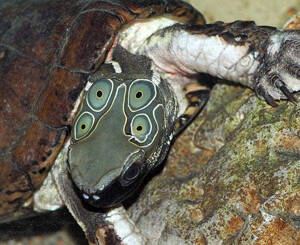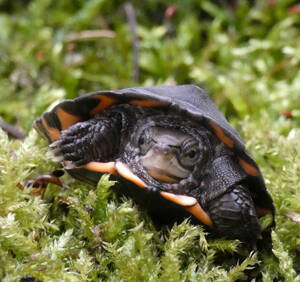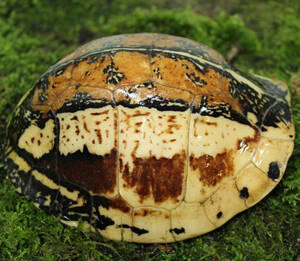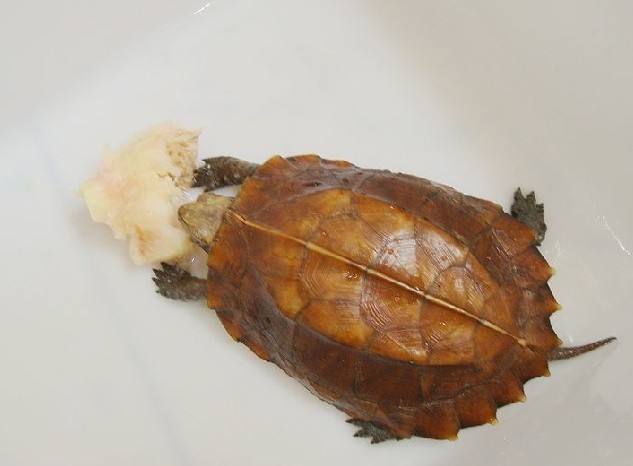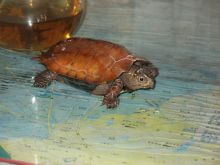Pelochelys cantorii
IUCN
LCBasic Information
Scientific classification
- name:Pelochelys cantorii
- Scientific Name:Pelochelys cantorii,Frog-faced Softshell Turtle、Asian Giant Soft-shelled Turtle、Cantor's Giant Softshell,Blue grouper, silver fish, green grouper, giant turtle, spotted turtle, Cantor's gian
- Outline:Testudines
- Family:Testudinata Trionyx
Vital signs
- length:About 600 mm
- Weight:50-100 kg
- lifetime:More than 100 years
Feature
The largest species of turtle, it has a relatively small head and small eyes. It likes to live in groups and has a long lifespan.
Distribution and Habitat
In China, it is distributed in Jiangsu, Zhejiang, Fujian, Anhui, Guangdong, Hainan, Guangxi, Yunnan, Jiangxi, and Zhejiang. Abroad, it is distributed in Bangladesh, Cambodia, India, Indonesia, Laos, Malaysia, Myanmar, Singapore, the Philippines, Thailand, and Vietnam.
The giant softshell turtle mainly lives in inland, slow-flowing freshwater rivers and streams. Some evidence shows that it also lives in coastal areas. It does not migrate often and prefers to live on the bottom of the water.
Appearance
Small head, smooth skin, short snout, oval carapace, insect-like concave patterns on the carapace surface, very short skirt. No more than 5 plastrons. Limbs flat and round. Short tail. Carapace grayish yellow, slightly olive green with brown markings, plastron yellowish white, almost white. Limbs grayish green.
Details
Before and after the release of the "List of National Key Protected Wildlife in China" in 1989, according to the "Fauna Sinica", all giant freshwater turtles in China were called "turtles". Therefore, the turtle (then scientific name Pelochelys bibroni), which was listed as China's first-class national key protected turtle, was later identified as "Rafetus swinhoei".
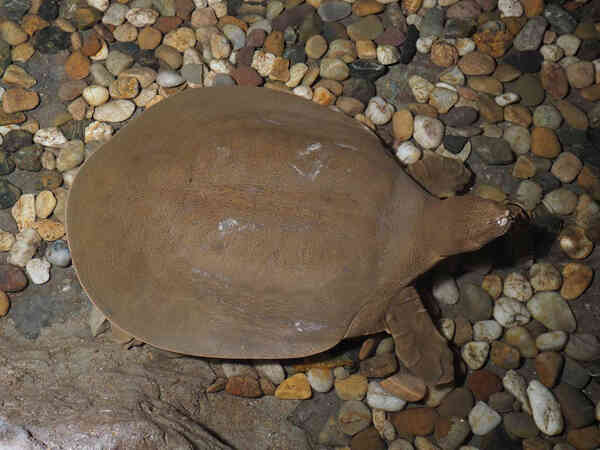
The turtle has a low metabolism and strong hunger resistance. It hibernates when the temperature is too high or too low. It is only forced to migrate when its habitat changes, and there is a phenomenon of grouping. It hides in the water during the day, often surfacing to breathe, and foraging in the shallows at night. It likes to live in groups and has a long lifespan. It likes to go ashore to cool off in midsummer; it hibernates at the bottom of the water in cold winter. The biggest instinct of the soft-shelled turtle is that it can breathe not only with its lungs, but also with its skin; it can even breathe oxygen through its throat and live in water for a long time. The soft-shelled turtle is an ambush predator, carnivorous, and mainly feeds on crustaceans, mollusks and fish (although some can also eat aquatic plants).
Every November, the soft-shelled turtle begins to hibernate at the bottom of the water on time, and lasts until April of the following year, for as long as half a year. The breeding season is from May to September. Females go ashore at night and dig holes in sunny sandy land to lay eggs. Each time, they lay dozens to dozens of eggs, up to 100 eggs. The eggs are spherical and have white calcium egg shells. The young hatch in about 40-60 days.
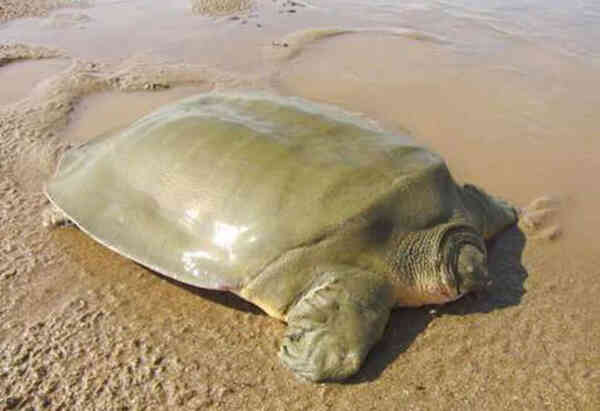
The Chinese giant cantorii is considered endangered and has disappeared from many ranges. Before 2007, it was last seen in Cambodia in 2003. In 2007, a survey of the Mekong River region in Cambodia found that there were many cantorii along the 48 kilometers of the river. One of the important reasons for the reduction of cantorii is that people hunt them. Because the meat tastes as fresh as that of turtle.
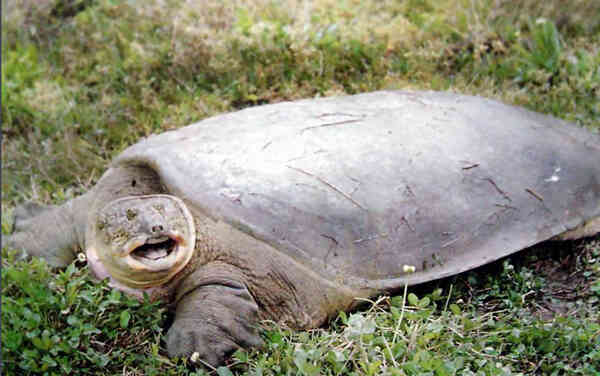
Cantorii has always been a precious food and medicinal material. Due to long-term hunting by people, the living environment has been deteriorating, and its habitat has been polluted and destroyed, causing its number to decrease sharply, almost on the verge of extinction, and urgent protection is needed.
Listed in the "List of National Key Protected Wildlife in China" - Level I.

